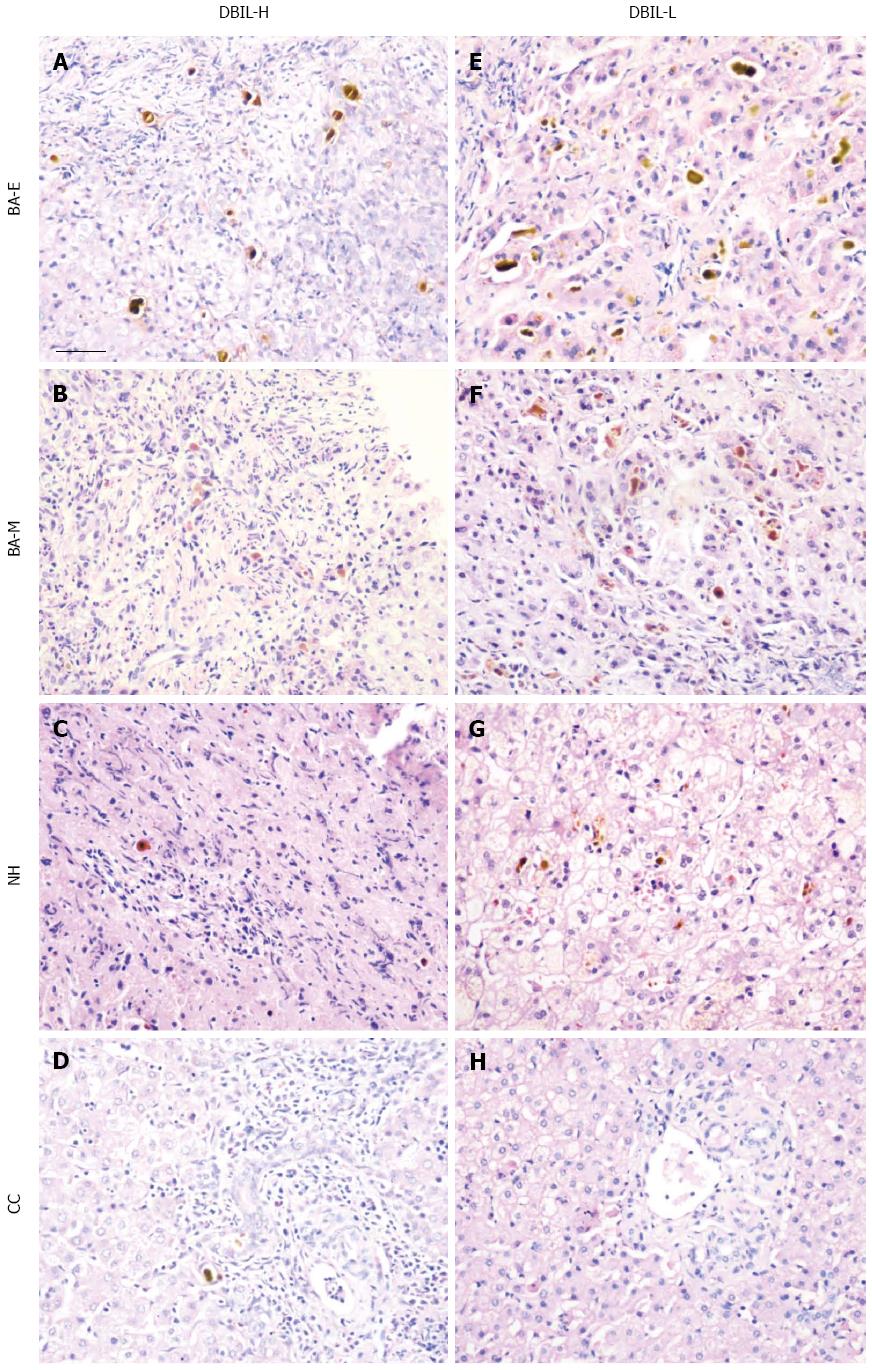Copyright
©The Author(s) 2016.
World J Gastroenterol. Feb 28, 2016; 22(8): 2545-2557
Published online Feb 28, 2016. doi: 10.3748/wjg.v22.i8.2545
Published online Feb 28, 2016. doi: 10.3748/wjg.v22.i8.2545
Figure 2 Comparison of bile plugs in biliary atresia, choledochal cyst, and neonatal hepatitis patients.
HE staining was performed on tissue sections from patients with three cholestatic diseases: biliary atresia [early (BA-E) and middle and late (BA-ML)], CC, and NH. The sections were separated based on their serum levels of DBIL into two groups: bilirubin high (DBIL-H) and bilirubin low (DBIL-L), with the sections containing the highest number of bile plugs in each group selected and photographed. The sections were examined with a Nikon light microscope. Scale bar represents 50 μm. CC: Choledochal cyst; DBIL: Direct bilirubin; HE: Hematoxylin and eosin; NH: Neonatal hepatitis
- Citation: Zhang RZ, Yu JK, Peng J, Wang FH, Liu HY, Lui VC, Nicholls JM, Tam PK, Lamb JR, Chen Y, Xia HM. Role of CD56-expressing immature biliary epithelial cells in biliary atresia. World J Gastroenterol 2016; 22(8): 2545-2557
- URL: https://www.wjgnet.com/1007-9327/full/v22/i8/2545.htm
- DOI: https://dx.doi.org/10.3748/wjg.v22.i8.2545









